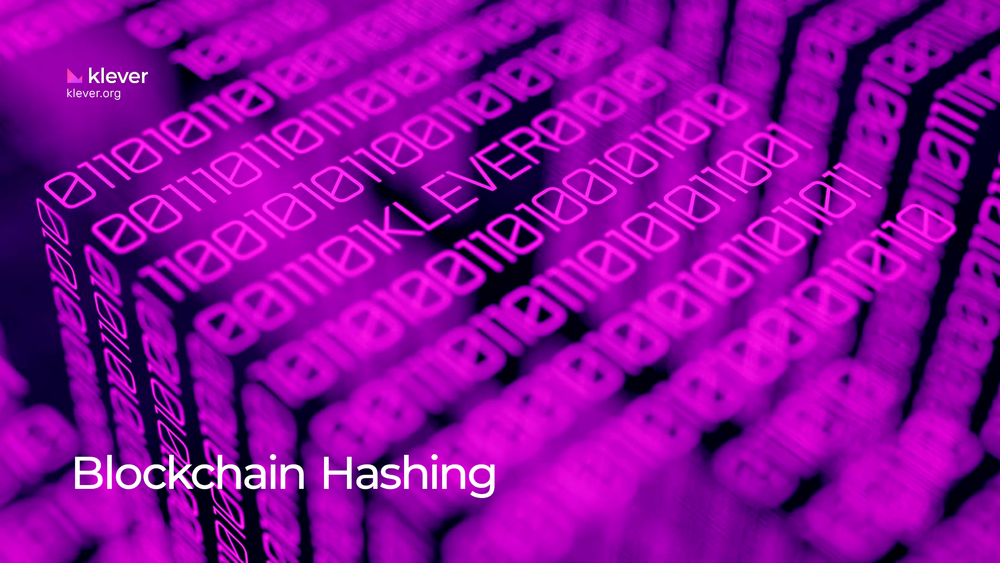Blockchain technology has revolutionized cryptocurrencies and digital transactions. Join us to explore the fascinating process at the heart of it all: blockchain hashing.

Blockchain technology, a groundbreaking innovation, has emerged in the realm of cryptocurrencies and digital transactions. Specifically, this decentralized, distributed ledger system is designed to chronicle transactions of any digital asset across multiple computers. Consequently, this ensures that any recorded transaction cannot be altered without modifying the subsequent blocks. So, what underpins this high level of security and integrity?
If you’ve ever explored the world of blockchain technology, you’ve likely encountered the term ‘hashing’. While it may initially appear complex, hashing is a fundamental component of blockchains’ operation. In a simple and klever way, we’ll demystify blockchain hashing and explain its role in a manner that’s easy to understand.
What is Hashing?
Hashing, in the context of blockchain, is a process of converting input of any length into a fixed-size string of text using a mathematical function. This is a one-way function, meaning the data can go from the original input to the output hash, but it can’t be reversed. If even a single character in the input is changed, the resulting hash will be completely different. This unique string, or ‘hash’, acts as a digital fingerprint for the data.
It’s important to note that while hashing is a form of cryptographic security, it’s not the same as encryption. Encryption transforms data into a different format, so only specific individuals can decrypt it into a readable format. With a hash, you can’t get the original data back. This makes it very secure, and that’s why hash functions are used in password mechanisms, digital signatures, and other data integrity applications.
Why is Hashing Important in Blockchains?
Hashing plays a crucial role in the security and functionality of blockchains. In a blockchain, the system assigns each block of data a unique hash. The next block then stores this hash, creating a chain of blocks.
If a block’s data is altered, its hash will change, breaking the chain and signaling that the blockchain has been tampered with. This ensures the integrity and security of the data stored on the blockchain.
Hashing is also used in mining, where miners must solve complex mathematical problems to validate transactions and add them to the blockchain. These problems involve finding a specific hash, a process known as proof-of-work.
Hashing and Blockchain Transactions
The blockchain hashes every transaction. This means that a hash function processes the transaction data, producing a unique hash that represents the transaction. Because each hash is unique, altering a transaction without changing its hash is impossible.
The Magic of Hash Functions
Bitcoin’s blockchain, for instance, uses the SHA-256 (Secure Hash Algorithm) hashing algorithm developed by the National Security Agency (NSA) in the USA. This algorithm transforms any input into a unique 64-character string. Even a minor change to the input, such as changing the case of a single letter, results in a completely different hash. However, if you input the same data again, it will always produce the same hash. This is because you are creating a message digest of that specific amount of data.
The Anatomy of a Block
Each block in a blockchain contains several key pieces of information:
Block Number
A sequential number that identifies where the block is located in the blockchain.
Block Hash
A unique identifier for the block, generated by a hash function.
Timestamp
The block’s creation date and time.
Previous Block Hash
The hash of the previous block in the blockchain linking the blocks together.
Nonce
A random number used in the mining process to generate a valid hash for the block.
List of Transactions
The block includes all the transactions, then it hashes each one.
These components come together to form a block in the blockchain, and each block links to the next through the ‘previous block hash,’ thereby creating a chain of blocks. Consequently, this structure ensures the security and integrity of the data stored on the blockchain.
Hashing: The Key to Klever Blockchain’s Success
Klever Blockchain leverages blockchain hashing to enhance network security and efficiency. Its one-way hashing function transforms data into unique strings, making data alteration nearly impossible and bolstering transaction security. The specific hashing algorithm used by Klever Blockchain also enables faster transaction processing by efficiently verifying transaction integrity.
Hashing ensures data integrity and transparency within Klever Blockchain. Additionally, each block contains the previous block’s hash, creating a chain. If the data in a block changes, it breaks the chain and signals data tampering. Moreover, this mechanism, along with the hashing and addition of each transaction to the Klever Blockchain, ensures data integrity, promotes transparency, and aids in fraud prevention. Hashing also contributes to Klever’s decentralization, enhancing network resilience and robustness by distributing the verification process across multiple nodes.
Unlock the potential of blockchain technology with Klever Blockchain, a low-code platform designed to develop and deploy decentralized applications and smart contracts. Moreover, don’t let complexity hold you back – Klever Blockchain is here to provide a user-friendly environment that makes blockchain development accessible and efficient. Furthermore, experience the security, transparency, and efficiency that Klever Blockchain offers. Start building with Klever Blockchain today and revolutionize your industry with the power of blockchain!
